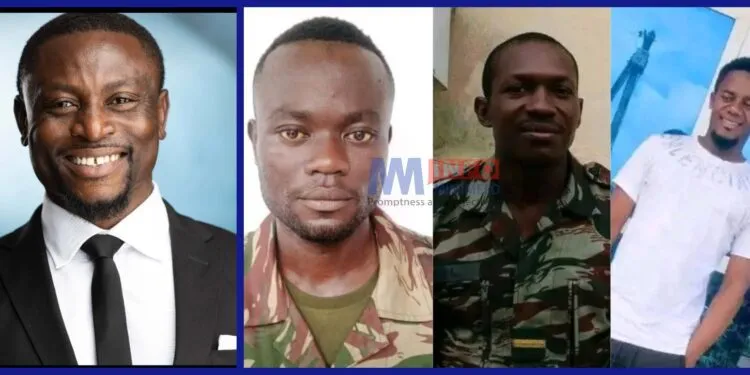A twist has emerged to the recent deadly attack in Akwaya, Cameroon’s Manyu Division. The Ambazonia Governing Council (AGovC), a separatist group, has claimed responsibility for the deaths of seven Cameroonian soldiers from the elite Rapid Intervention Battalion (BIR). The group’s statement now clouds the incident, which was initially attributed to Fulani herdsmen. Initial reports stated that five people died, but later confirmation revealed the number rose to seven.
Lucas Asu, the spokesman for the AGovC, claimed that Ambazonian fighters carried out the attack in retaliation for what they call an ongoing “war of extermination” by Cameroonian authorities against the people of Ambazonia. The statement also accused Cameroonian leadership of perpetuating violence in the region.
“A graphic video has emerged showing the SEVEN bodies of Cameroun occupation soldiers (BIRs) partially burnt and decomposing that were killed in an IED attack in Akwaya in the State of Manyu by Ambazonian forces over the weekend,” the AGovC wrote. The group urged President Paul Biya, Prime Minister Dion Ngute, Minister Atanga Nji, and General Bouba to retrieve the decomposing remains of the soldiers.
Bloody Start to 2025
The attack, which occurred on Friday, January 3rd, 2025, marked a grim start to the new year in the volatile region. The AGovC further claims that the ambush occurred as a direct response to President Biya’s recommitment to a military approach in his New Year’s speech. “If this is just for the first week of 2025, imagine how devastating the rest of the year would be for Biya and Cameroun,” the statement added.
The AGovC praised the fighters involved in the attack, framing it as a successful mission aimed at protecting civilians from what they perceive as the threat posed by Cameroonian forces. “The Ambazonia Governing Council on behalf of all Ambazonian forces and the Ambazonia people extend our collective gratitude to the stouthearted fighters who undertook the successful mission, eliminating the threat and danger on our civilian population,” the group said.
Conflicting Narratives
The Cameroonian government had initially attributed the deaths of seven soldiers to an attack by Fulani herdsmen, a common source of conflict in the area. The AGovC’s claim of responsibility challenges this assertion, further highlighting the complexity of the ongoing crisis in the Anglophone regions of Cameroon.
Analysts have noted that such incidents underline the dual threats faced by Cameroonian forces in the region—ethnic tensions and the separatist insurgency. The video cited by the AGovC could also provide crucial evidence to verify the attackers’ identities, but it has not yet received independent confirmation.
Rising Tensions in the Anglophone Crisis
The Anglophone crisis, now in its seventh year, has claimed thousands of lives and displaced hundreds of thousands. Separatist groups, like the AGovC, have been fighting for the independence of Ambazonia, comprising the Northwest and Southwest regions of Cameroon. The Cameroonian government has maintained a hardline stance, relying on military intervention to suppress the insurgency, while sporadic clashes with armed groups continue to escalate.
Human rights organisations have repeatedly called for dialogue to end the conflict, but attempts at negotiation have largely stalled.
Cameroonian authorities have yet to respond to the AGovC’s claims or to the call to recover the bodies of the soldiers.
For the families of the slain soldiers and the civilians caught in the crossfire, the start of 2025 brings renewed grief and uncertainty in a conflict that shows no signs of abating.
Ayaba Cho Lucas, the leader of the AgovC, remains in detention in Norway following his arrest in September. He is facing charges of inciting crimes against humanity.



